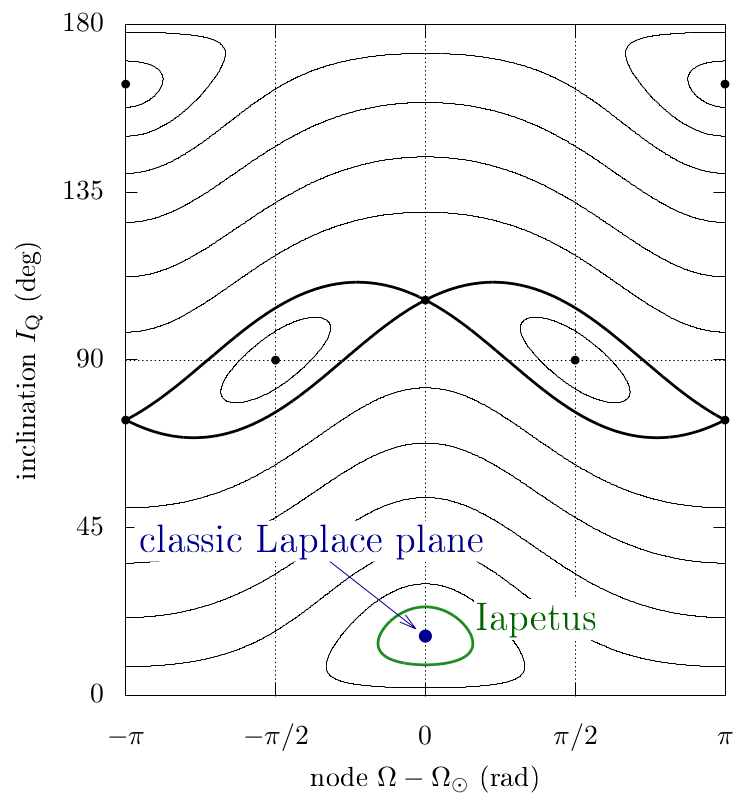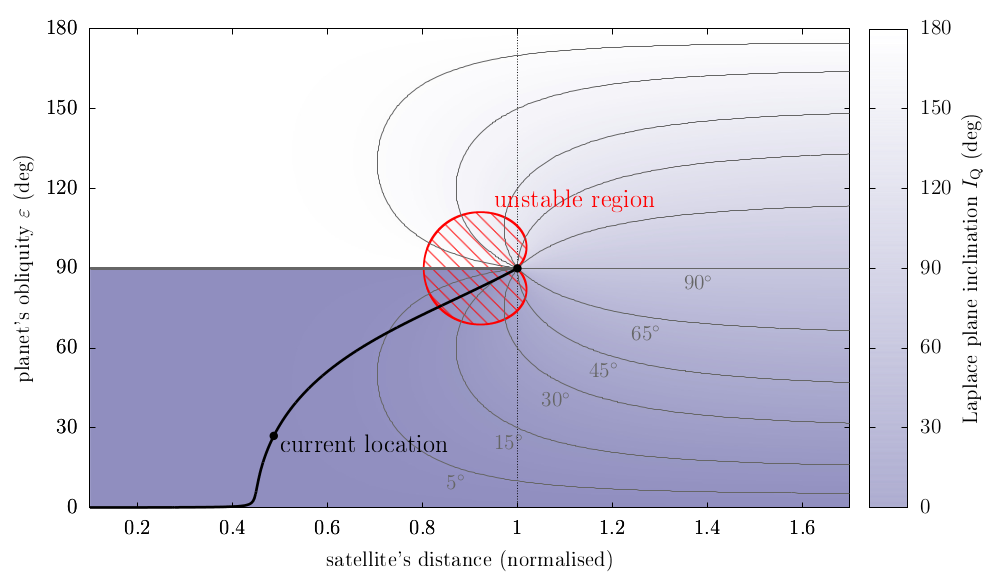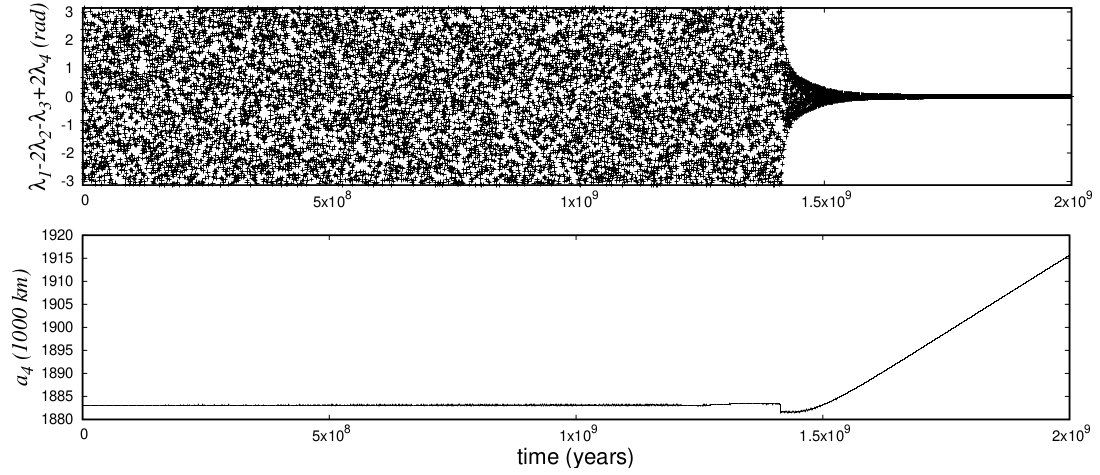
Natural satellites, also known as "moons", can be divided into two classes: regular moons and irregular moons.
Regular moons form in a circumplanetary disc, whose orientation results from an equilibrium between the attraction of the planet's equatorial bulge and the attraction of the Sun. After their formation, regular moons remain close to their equilibrium plane (known as "Laplace plane"), unless their orbits are reshaped by an exterior perturber.
Irregular moons are Solar System bodies captured by the planet after its formation. As such, they are generally small, and their orbits can have any orientation.
The orbits of all moons expand or contract over time because of the energy dissipation resulting from tidal forces between moons and their host planet (we say that satellites "migrate").
As part of the project led by Stéfan Renner on Saturn's satellites, we have shown that an overlap of resonances in the motion of the moons Atlas and Prometheus is source of chaos [i].

Contrary to other regular moons of Saturn, Iapetus has a high orbital inclination with respect to the Laplace equilibrium plane. As part of the project of William Polycarpe, we have discovered that the migration of the satellite Titan can explain Iapetus's anomalous inclination by means of an orbital resonance crossed several tens of millions of years ago [viii].

However, Iapetus would have had high chances of being ejected from Saturn if Titan had not migrated fast enough. Therefore, our results set a lower bound to the migration velocity of Titan. In 2020, Valéry Lainey and colleagues confirmed these results by providing the observational evidence of the fast migration of Saturn's moons (for more details, see the IMCCE newsletter #170, in French).
As part of a project carried out with Giacomo Lari, we have shown that the dynamics of a migrating moon is intimately related to the spin axis motion of its host planet (see the section about Spin axes). If the planet's spin axis is trapped in resonance, which is probably the case of Saturn, then the system converges towards an unstable configuration [xvii].

Through this generic mechanism, Titan might be strongly destabilised in the future, up to the point of being ejected or colliding into Saturn. Titan's current migration rate indicates that this event may only happen in several billions of years from now. This instability could also have contributed to the spin-axis tilt of Uranus [xix].
The four major moons of Jupiter (Io, Europa, Ganymede, and Callisto) are arranged in a configuration that is unique in the Solar System: in the same time Ganymede completes one revolution on its orbit, Europa completes two, and Io completes four. Because of this resonance, the effects of tidal energy dissipation propagate among the different moons, which complicates their migration history.
I am involved in a project led in collaboration with Giacomo Lari and Marco Fenucci (Italy) about the long-term evolution of Jupiter's moons. Our study falls within the preparation of the JUICE space mission from ESA.

For a given model of tidal dissipation, we have shown that over the future hundreds of millions of years from now, Io, Europa and Ganymede will migrate together and get closer to Callisto, until Callisto is trapped into resonance as well [xiii]. However, through a mechanism called "tidal resonance locking", Callisto might actually migrate much more rapidly than what is generally thought. In this alternative framework, we have shown that a fast migration of Callisto is compatible with the current locations of Jupiter's moons; yet, this scenario is not the most probable one [xx].
Contrary to what is generally accepted, the current resonance between Io, Europa and Ganymede is not produced through a chain of two resonances (Io-Europa and Europa-Ganymede). Instead, this resonance is a "pure" three-body resonance that involves all three moons together [xxiv]. These results have strong consequences on the formation process of the Galilean moons and their evolution to their current state.
Last update: 2024-11.